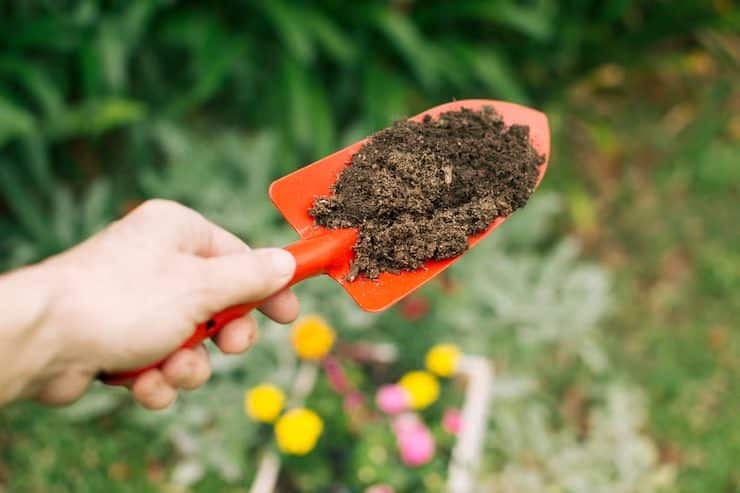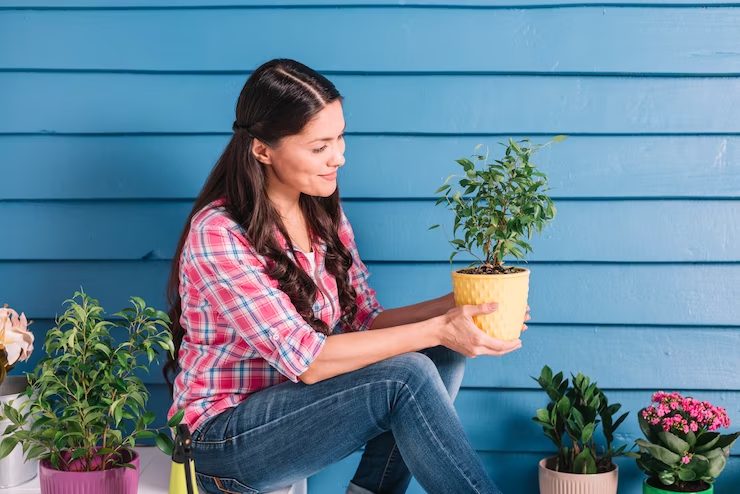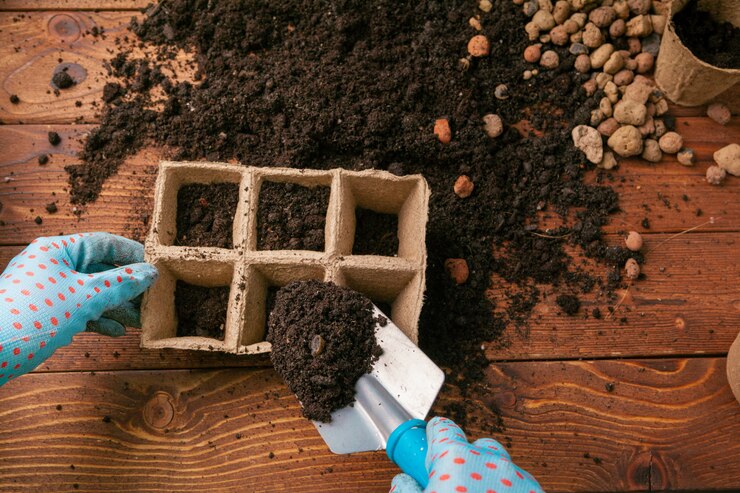A Step-By-Step Guide To Growing Vegetables And Herbs At Home
Assuring yourself with fresh organic produce when needed is one of the greatest advantages of growing your own veggies and herbs at home, but starting can be intimidating for novice gardeners. That’s why we have put together this step-by-step guide on how to do just that.
First, choose a location with ample sunlight and good soil drainage. Next, decide what you wish to grow, purchase the appropriate seeds or seedlings and prepare the soil by clearing away weeds and adding organic compost. Plant them according to instructions on their packet, water regularly and observe progress!
As your plants expand, you may need to provide support in the form of trellises or stakes. When the harvest time arrives, reap your harvest with pride – knowing you produced delicious yet nutritious vegetables and herbs right at home! With some patience and hard work you too can grow delicious yet healthful food to add your table!
1. Choose The Right Location

Establishing the ideal environment is paramount when growing vegetables and herbs at home. An ideal spot should receive at least six hours of direct sunlight daily without obstructions that could cast shade, with fertile, well-draining soil rich with organic matter that drains quickly. Other considerations should also include factors like access to water, wind exposure and space availability.
Raised garden beds or containers may be an ideal choice for those with limited space or poor soil quality, or those wishing to occupy small outdoor spaces. Once you’ve selected an ideal location, it is time to prepare the soil and plant vegetables and herbs – you could soon enjoy an abundant harvest of fresh homegrown produce right in your own backyard!
2. Choose The Right Soil

Indoor gardening can be an excellent way to ensure a steady supply of fresh produce, but choosing the appropriate soil can make all the difference in terms of its success. Start by finding a spot with at least six hours of sunlight per day before assessing its soil characteristics; most vegetables and herbs prefer well-draining organic matter rich soil with ample drainage; if yours is clay-like add some sand or perlite to improve drainage.
Once your soil is prepared, add compost or fertilizer as necessary to meet its nutritional requirements. It’s now time to plant your seeds or seedlings; be sure to follow instructions on their seed packet or tag for optimal planting depth and spacing – with proper care, you will soon be enjoying the fruits (and vegetables!) of your labor!
3. Choose The Right Plants

Indoor gardening can provide an endless source of fresh produce while being an engaging hobby, yet novice gardeners often struggle with knowing where and how to start. The first step should be selecting suitable plants based on factors like climate, soil type and available space – some easy-to-grow options for newcomers include tomatoes, lettuce, basil and mint.
Once you’ve chosen your plants, it is essential to prepare the soil with care and ensure there is adequate drainage. Next step should be planting seeds or seedlings and providing them with enough sunlight, water, nutrients and care; regular pruning and fertilizing sessions will ensure their success and yield a bountiful harvest! With patience and dedication anyone can successfully grow vegetables and herbs at home!
4. Prepare The Soil

Preparing your soil is essential when it comes to growing vegetables and herbs at home. A productive garden requires fertile, well-draining soil which contains plenty of essential nutrients. Remove any debris such as rocks or weeds before adding organic matter such as compost or manure for improved soil fertility.
Add organic matter to the soil in an amount equal to at least six inches, mixing thoroughly into it until all areas of it have been covered with it. If the soil is clay-heavy or sandy, consider adding additional amendments such as perlite, vermiculite or sand to improve drainage and enhance plant life growth. Once ready, the soil can be planted.
Do your research before planting to ensure your soil can support the specific crops you wish to cultivate, and with proper soil preparation you’ll soon have a thriving and rewarding home garden!
5. Plant The Seeds Or Seedlings

Growing vegetables and herbs at home is a rewarding experience that will both save money and provide fresh organic produce. The first step is deciding which plants you wish to cultivate and where. After that is complete, prepare the soil – either raised beds or directly into the ground are both suitable methods – before sowing seeds or seedlings according to package instructions.
Make sure to water and provide sunlight to your plants regularly, before fertilizing with organic fertilizer after they begin growing. Keep an eye out for pests or diseases, taking measures as necessary to treat or prevent them. With careful attention and perseverance, your backyard garden can yield an abundant harvest of vegetables and herbs!
6. Water The Plants Regularly

One of the keys to successfully growing vegetables and herbs at home is making sure their plants receive regular irrigation, especially during hotter summer months when more water may be necessary for survival. When starting out your garden it’s essential that the location meets specific conditions: most veggies require at least six hours of direct sunlight each day so choose somewhere with plenty of exposure.
First, prepare the soil by clearing away any weeds or debris and adding compost or organic matter to boost fertility. Once that step is completed, it’s time to plant vegetables or herbs – make sure you follow recommended spacing guidelines so they have ample room to grow!
And finally, water your plants regularly–aiming for at least an inch per week using either a watering can or hose–taking care not to overwater or damage the plants. By doing this with care and attention, you could experience an abundance of vegetables and herbs right in your own backyard!
7. Fertilize The Plants

Growing vegetables and herbs at home is an incredibly satisfying and cost-effective way to ensure an endless supply of fresh produce, but it requires effort and knowledge. A key step for successful plant growth is fertilizing. Fertilizers supply essential nutrients needed by the plants’ roots – in the initial stage use slow-release fertilizer or compost to prepare your soil; once your seedlings have sprouted use balanced fertilizer that contains equal parts nitrogen, phosphorus, and potassium for best results.
Use organic fertilizers such as bone meal, fish emulsion or compost tea to promote healthy plant growth. Be careful not to overfertilize as this could damage the plants; proper care and fertilization can produce an abundance of nutritious vegetables and herbs for you to harvest from your own garden!
8. Control Pests And Diseases

Growing vegetables and herbs at home is an effective way to ensure fresh organic produce at your fingertips. Although it may initially seem intimidating, with proper guidance it can quickly become fun and rewarding experience. First step should be selecting an area with ample sunlight and drainage that will accommodate your garden, then selecting which crops and seeds or seedlings you would like to grow from high quality seeds/seedlings available for purchase and adding compost/fertilizer into the soil to enrich its nutrients for healthy soil development.
Water your plants regularly without overwatering, using natural methods such as companion planting and organic pesticides to manage pests and diseases, before harvesting vegetables and herbs at the right time for maximum freshness and taste. By taking these steps, you’ll soon enjoy an abundant harvest of organic homegrown produce!
9. Harvest The Crops

Growing vegetables and herbs at home can be both rewarding and fulfilling, providing both an achievement-related sense of fulfillment as well as fresh organic produce straight from your garden. If gardening is new to you, don’t fret – it’s easier than you might think; here is a step-by-step guide that will get you going.
Before beginning your garden, select an ideal site. Your chosen location should receive plenty of sun and drainage is optimal. After that, prepare the soil by clearing away debris and adding compost or fertilizer. Finally, choose vegetable and herb seeds suitable to your climate and personal preferences for planting.
Once your seeds or seedlings have been planted, make sure that you water and weed regularly to ensure optimal conditions for their growth. As they develop further, support or trellises may need to be provided as certain varieties need support; and harvest your crops at peak ripeness to maximize flavor and nutrition!
10. Enjoy The Vegetables And Herbs Of Your Labor

Growing vegetables and herbs at home is a fantastic way to enjoy the rewards of your labor while saving money and eating healthier. From large gardens to balconies, anyone can cultivate a wide range of fresh produce using straightforward techniques and tools. When starting, select an area for planting that meets their sunlight and water requirements before amending the soil with compost and fertilizers for maximum growth potential.
Once planted, water your seeds or seedlings according to their spacing and depth requirements and monitor for pests or diseases as the plants develop, taking appropriate action against any issues if needed. Finally, harvest your veggies when ready and enjoy in your favorite recipes for maximum fresh produce all season long! With some care and attention you can cultivate a flourishing garden that provides delicious produce!
Conclusion
In this step-by-step guide, we have detailed the process of growing vegetables and herbs at home. From selecting an ideal location and soil composition, to selecting seed varieties and planting methods that suit you best – everything has been covered to help ensure success in growing your own produce! Finally, we also discussed watering, fertilization and pest control as essential elements to maintaining their health and growth of your crops.
Additionally, we discussed the advantages of companion planting and crop rotation to create a more sustainable and diverse garden. By taking these steps, you can enjoy fresh vegetables and herbs grown right from your backyard! Growing your own produce is not only rewarding; it is also a fantastic way to reduce carbon emissions and foster healthier lifestyle habits.
Also Refer : 10 Essential Things to Consider Before Buying a New House
